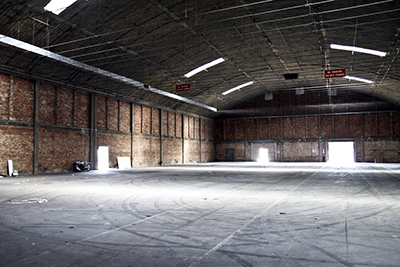Insatiable appetite for industrial space continues through 2017
JLL research suggests industrial space faces squeeze with record-high rents and historic vacancy lows.

Healthy consumer spending and buoyant e-commerce sales are driving demand for warehouse and distribution space, pushing vacancy rates to a 17-year low and rents through the roof, but demand is outweighing supply and new construction is struggling to keep up.
With few properties available to buy or lease, the industrial construction pipeline is growing and being led by a significant increase in build-to-suit properties, according to JLL’s Industrial Outlook 2017. Adding the new deliveries from the past five years with the current construction pipeline, the U.S. industrial market will add nearly one billion square feet to its inventory by 2018. Dallas, Inland Empire, Philadelphia, Denver and Atlanta were the top five markets accounting for more than half of the new development starts in the first quarter.
“Vacancies are at historic lows and in some markets, as low as two percent or less,” said Craig Meyer, president of JLL’s Industrial group, Americas. “Coupled with broad rental growth in some markets as high as double digits year-over-year, 2017 is already shaping up to be another great year for industrial real estate. There is also an estimated 247 million square feet of new industrial space slated for delivery, a 10-year high. These figures show the market is on fire today for industrial property owners, but in some markets it poses unique challenges for companies searching for industrial space. While demand remains strong, there is an underlying mood of uncertainty stemming from an unpredictable political climate. Business leaders have not yet hedged on capital budgeting and there is more discussion around caution than market conditions reflect.”
Five factors to note:
- Record-high rents continue to soar—The resounding strength of industrial tenant demand paired with the toughest market conditions ever experienced in the sector are driving the sixth consecutive year of rental growth. While industrial rents rose almost universally across the United States, the sharpest spikes occurred on the East and West coastal markets of Northern New Jersey, San Francisco Mid-Peninsula, Seattle and the Inland Empire. Steep prices have done little to curb demand; all four markets saw vacancy rates drop below 4 percent. Competing with residential and office developers for scarce vacant sites, developers in these markets are repurposing industrial buildings.
- Little to no vacant space—Vacancy rates fell in nearly three-quarters of U.S. markets, causing overall vacancy rates to decline to 5.3 percent. Despite a steady flow of new construction, 88 percent of the markets that JLL tracks are expected to remain favorable to landlords. Significant leasing in the last two quarters has led to stable vacancy rates in multiple markets.
- 2017 proving to be another solid year for construction—The construction pipeline continues to grow, with a 29 percent increase over the fourth quarter in build-to-suit property starts.
- Growing e-commerce and food subscription services drive leasing activity—Online shopping habits are one of the forces behind the strong industrial real estate market. The logistics and distribution and third-party logistics (3PL) sectors that serve many retailers and e-commerce companies represented 24 percent of total leasing activity in the first quarter of 2017. As logistics companies expanded their presence, the food and beverage sector reported the highest number of new-to-market lease transactions. Growing demand for ready-to-eat meals and food subscription services is driving leasing activity as these services seek space to expand operations and locate close to their customers.
- Coastal regions experiencing record high rents and low vacancies—Northern New Jersey, San Francisco’s Mid-Peninsula, Seattle and Inland Empire all saw annual growth rates of more than 10 percent. Markets with the least vacant space continue to be in California including Los Angeles, East Bay, and Orange County, all reporting vacancy of less than 2 percent. Philadelphia, Cincinnati, Pittsburgh and Baltimore reported the highest decline in quarter-over-quarter vacancy rates.
“Cost-sensitive tenants in larger warehouse space with leases of five years or more are likely to experience sticker shock when their lease comes up for renewal,” said Meyer. “We are encouraging our occupier clients to think about these leases much earlier and either renew or find expansion space to solve for the lack of alternatives.”
The JLL Industrial Outlook 2017 provides an overview of what’s in store for the U.S. industrial market in 2017, including detailed outlooks for 51 markets.

Article Topics
Storage News & Resources
Walmart chooses Swisslog AS/RS and software for third milk processing facility Steele Solutions showcases advanced structural steel platforms and materials handling chutes HWArobotics delivers advanced AS/RS technology to e-commerce specialist Darwynn Frazier shows Pallet Spacing System and Method Steel King Industries announces strategic collaboration with Automha Americas Kardex FulfillX for AutoStore can help businesses meet goals in under 6 months The Stow Group puts the spotlight on its Movu Robotics brand More StorageLatest in Materials Handling
Registration open for Pack Expo International 2024 Walmart chooses Swisslog AS/RS and software for third milk processing facility NetLogistik partners with Vuzix subsidiary Moviynt to offer mobility solutions for warehouses Materials Handling Robotics: The new world of heterogeneous robotic integration BSLBATT is looking for new distributors and resellers worldwide Lucas Watson appointed CSO for Körber’s Parcel Logistics business in North America Hyster recognizes Dealers of Distinction for 2023 More Materials HandlingSubscribe to Materials Handling Magazine

Find out what the world's most innovative companies are doing to improve productivity in their plants and distribution centers.
Start your FREE subscription today.
April 2024 Modern Materials Handling

Latest Resources










